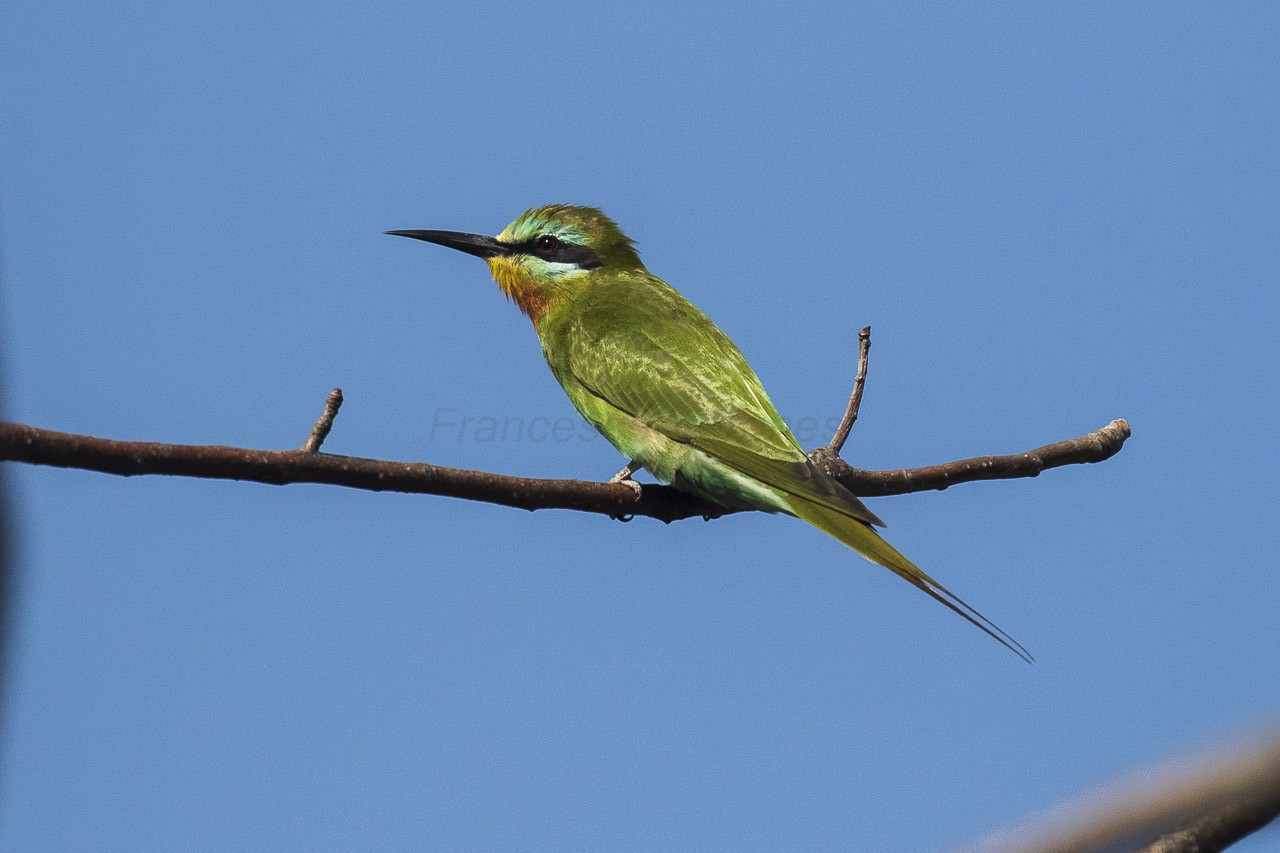Blue-cheeked Bee-eater
A species of Typical Bee-eaters Scientific name : Merops persicus Genus : Typical Bee-eaters
Blue-cheeked Bee-eater, A species of Typical Bee-eaters
Botanical name: Merops persicus
Genus: Typical Bee-eaters
Content
Description General Info
 Photo By Francesco Veronesi , used under CC-BY-SA-2.0 /Cropped and compressed from original
Photo By Francesco Veronesi , used under CC-BY-SA-2.0 /Cropped and compressed from original Description
This species, like other bee-eaters, is a richly coloured, slender bird. It is predominantly green; its face has blue sides with a black eye stripe, and a yellow and brown throat; the beak is black. It can reach a length of 31 cm (12 in), with the two elongated central tail feathers adding another 7 cm (2.8 in). Sexes are mostly alike but the tail-streamers of the female are shorter. This is a bird which breeds in sub-tropical semi-desert with a few trees, such as acacia. It winters in open woodland or grassland. As the name suggests, bee-eaters predominantly eat insects, especially bees, wasps and hornets, which are caught in the air by sorties from an open perch. However, this species probably takes more dragonflies than any other food item. Its preferred hunting perch is telephone wires if available. Blue-cheeked bee-eaters may nest solitarily or in loose colonies of up to ten birds. They may also nest in colonies with European bee-eaters. The nests are located in sandy banks, embankments, low cliffs or on the shore of the Caspian Sea. They make a relatively long tunnel of 1 to 3 m (3.3–9.8 ft) in length in which the four to eight (usually six or seven), spherical white eggs are laid. Both the male and the female take care of the eggs, although the female alone incubates them at night. Incubation takes 23–26 days. The call sounds 'flatter' and less 'fluty' than the European bee-eater. 
Size
31 cm
Colors
Brown
Black
Green
Yellow
Red
White
Blue
Nest Placement
Burrow
Feeding Habits
Blue-cheeked Bee-eater primarily feeds on insects, favoring bees, wasps, and hornets captured mid-flight from perches. Dragonflies constitute the bulk of its diet. Notable for aerial hunting prowess, blue-cheeked Bee-eater exhibits a preference for certain prey types.
Habitat
The blue-cheeked Bee-eater thrives in sub-tropical semi-arid regions marked by sparse vegetation including acacias, occupying deserts and steppes. Breeding grounds are sandy locales near water, lined with reeds. They migrate seasonally to greener habitats such as savannas and river valleys, often resting in mangroves. Typically found below 1500 m elevation, these birds can adapt to open woodlands and grasslands up to 2400 m.
Dite type
Insectivorous
General Info
Feeding Habits
Bird food type
Species Status
Not globally threatened.
Scientific Classification
Phylum
Chordates Class
Birds Family
Bee-eaters Genus
Typical Bee-eaters Species
Blue-cheeked Bee-eater